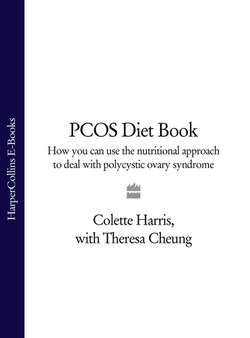Читать книгу PCOS Diet Book: How you can use the nutritional approach to deal with polycystic ovary syndrome - Theresa Cheung - Страница 26
IO STEPS TO A HEALTHIER YOU
ОглавлениеIn 1992 the US Department of Agriculture suggested that:
30–45 per cent of your calories should come from starchy (carbohydrate) foods – preferably whole grains such as wholewheat bread, brown rice, quinoa (a whole grain that cooks like white rice), wheat, oatmeal and rye
15–25 per cent from vegetables
10–15 per cent from fruit
less than 10 per cent from meat and dairy products
no more than 5 per cent from sugars and fats.
This is generally held to be a good model. Our diets would be far healthier if we stuck to these guidelines, but the truth is that the average Western diet consists of 37 per cent fat and 50 per cent refined carbohydrates and refined sugars. This diet is not healthy for most people, and can actually make the symptoms of PCOS worse.
The PCOS healthy eating plan has no gimmicks or secrets. You’ve seen that there is a link between nutrition and PCOS, and that changing the way you eat can ease symptoms now and protect your health in the future. Food is fuel. It helps your body function more smoothly. Scrimp on the quality and quantity of fuel and your body pays the price. That’s true for everyone, but especially true if you have PCOS, because what you eat, when you eat and how much you eat directly affect your blood-sugar levels and hormone function.
So how do you eat right for PCOS? The principles are basically the same as for any healthy diet – sufficient complex carbohydrates, moderate amounts of protein, sufficient essential fats, a minimum of saturated fats and plenty of water. Each of the 10 easy-to-follow steps that follow focuses on one aspect of your diet.
